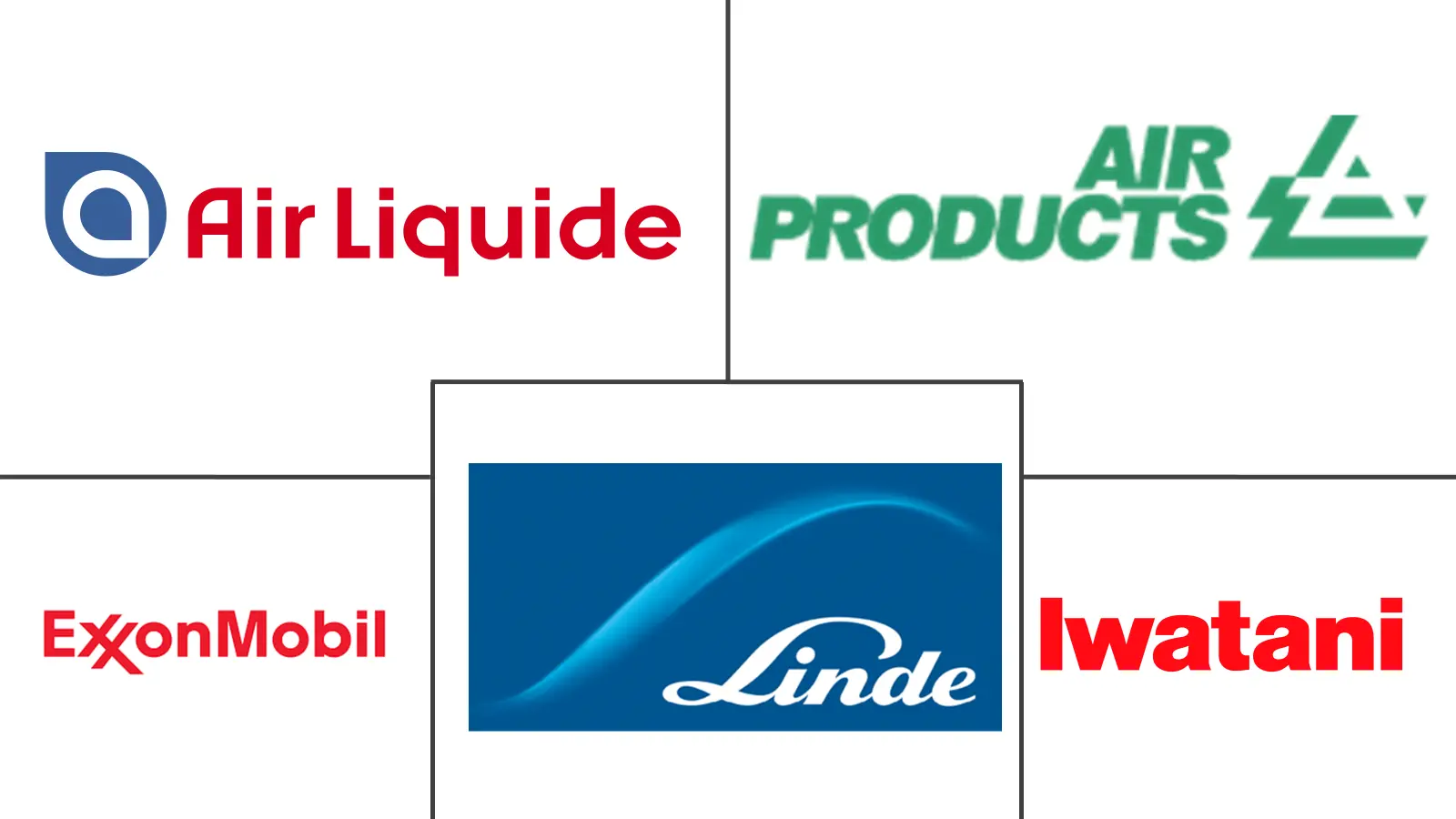Top Companies in Helium Market
This report lists the top Helium companies based on the 2023 & 2024 market share reports. Mordor Intelligence expert advisors conducted extensive research and identified these brands to be the leaders in the Helium industry.
-
Linde Plc
-
Air Liquide
-
Air Products and Chemicals, Inc.
-
ExxonMobil Corporation
-
Iwatani Corporation
*Disclaimer: Top companies sorted in no particular order

HeliumMarket Concentration

HeliumCompany List
-
Air Liquide
-
Air Products Inc.
-
Exxon Mobil Corporation
-
Gazprom
-
Gulf Cryo
-
Iwatani Corporation
-
Linde PLC
-
Matheson Tri-Gas Inc.
-
Messer Group GmbH
-
NexAir LLC
-
Pgnig Sa (Orlen)
-
Qatarenergy Lng
-
Renergen
-
Weil Group
Specific to Helium Market
Competitive Landscape Report Includes
Company Profiles (includes Global Level Overview, Market Level Overview, Core Business Segments, Financials, Headcount, Key Information, Market Rank, Market Share, Products and Services, and Analysis of Recent Developments). Key Strategic Moves, Market Share Analysis, Company Landscape, and List of Companies.
Helium Market Companies Summary
The helium market is dominated by a few key players, making it a highly consolidated industry. These major companies have a significant influence on the market, with their activities shaping the industry's trends and growth prospects. They are involved in various aspects of the helium business, including the extraction process, which is often hindered by high costs and stringent government regulations. Despite these challenges, the key players continue to explore efficient methods for storing and transporting gases, providing potential opportunities for market expansion. The companies in the helium market are also significantly impacted by the trends in various industries, particularly the healthcare and electronics sectors. The growing usage of helium in these sectors is expected to drive market demand in the medium term. The healthcare sector, for example, relies heavily on helium for a range of applications, including cooling MRI machines and treating respiratory ailments. Similarly, the electronics and semiconductor industry is increasing its consumption of helium. These trends present both opportunities and challenges for the companies operating in the helium market.
Explore MoreHelium Companies - Table of Contents
-
1. COMPETITIVE LANDSCAPE
-
1.1 Mergers and Acquisitions, Joint Ventures, Collaborations, and Agreements
-
1.2 Market Share (%) Analysis
-
1.3 Strategies Adopted by Leading Players
-
1.4 Company Profiles
-
1.4.1 Air Liquide
-
1.4.2 Air Products Inc.
-
1.4.3 Exxon Mobil Corporation
-
1.4.4 Gazprom
-
1.4.5 Gulf Cryo
-
1.4.6 Iwatani Corporation
-
1.4.7 Linde PLC
-
1.4.8 Matheson Tri-Gas Inc.
-
1.4.9 Messer Group GmbH
-
1.4.10 NexAir LLC
-
1.4.11 Pgnig Sa (Orlen)
-
1.4.12 Qatarenergy Lng
-
1.4.13 Renergen
-
1.4.14 Weil Group
-
- *List Not Exhaustive
-
Helium Companies FAQs
Who are the key players in Helium Market?
Linde Plc, Air Liquide, Air Products and Chemicals, Inc., ExxonMobil Corporation and Iwatani Corporation are the major companies operating in the Helium Market.

